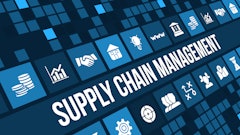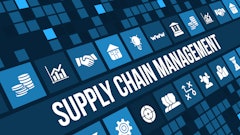
The landscape of strategic material sourcing is evolving rapidly, driven by an urgent need for greater transparency and collaboration across the supply chain. For steel producers and original equipment manufacturers (OEMs), this shift has exposed the limits of traditional sourcing models that were not designed to be flexible for market shifts. Today’s globalized, dynamic markets demand more than just cost-efficiency—they require insight, agility and shared accountability.
Strategic material sourcing must now be grounded in a holistic understanding of the materials used—where they come from, how they’re made and what impact they carry. That includes visibility into origin, recycled content, embodied carbon, and emissions across the value chain. Transparency is no longer a “nice-to-have.” It’s a critical capability for accurately assessing cost, risk and long-term viability.
The critical role of supply chain visibility
The importance of visibility has only intensified in light of recent global disruptions. Market volatility and geopolitical events have made it clear that agile, transparent supply chains are not just advantageous, but essential. For instance, recent tariff policy shifts in the United States have disrupted supply chains dependent on imports. Companies with visibility into their supply chains were more quickly able to find alternative domestic supply solutions. That level of preparedness and adaptability is only possible when you can see and understand your supply chain end to end.
Agility, enabled by visibility, allows organizations to pivot quickly and maintain continuity when disruptions strike. But it’s not just about risk response. Visibility also strengthens redundancy and builds resilience ensuring that material purchasers are not overly dependent on a single region or supplier. And when all stakeholders from OEMs to regulators are aligned from the start of a project, the path to success becomes clearer, faster.
Speed to market and sustainability benefits
Transparency brings speed and sustainability into alignment. When material purchasers fully understand the carbon footprint of materials and the emissions generated through transportation and sourcing strategies, smarter, faster decisions become possible.
Take domestic steel sourcing as an example. Sourcing closer to home reduces transport-related emissions and shortens delivery timelines, all while supporting cost-effective, sustainable material production. The result is a supply chain that delivers both economic and environmental benefits, a win for ESG commitments and the bottom line.
In this way, transparency is a catalyst. It enables material purchasers to design supply chains that are resilient, efficient and aligned with long-term sustainability goals.
Addressing challenges in sustainability transparency
Still, transparency around sustainability faces real hurdles. Today’s market suffers from non-standardized definitions of terms like “green steel,” as well as inconsistent or opaque pricing premiums for lower-emission products. Amid this confusion, embodied carbon has emerged as the most credible, measurable, and comparable metric because it cuts through the noise and provides a clear basis for decision-making.
Yet even with reliable data, adoption is hindered when decision makers don’t understand the value in paying a premium for greener products. This underlines the urgent need for consistent industry standards and transparent, compelling communication across the supply chain.
Future outlook: AI and data integration
Looking forward, the integration of AI and advanced data analytics will fundamentally reshape supply chain transparency. These technologies are still maturing, but they’re already beginning to outperform traditional methods in trend analysis and risk assessment. In the future, AI could enable real-time tracking of emissions, materials and logistics data, allowing for better-informed, real-time decisions.
As AI capabilities expand, material purchasers will be better equipped to balance cost with sustainability, shaping supply strategies that are both agile and aligned with corporate values.
Collaboration as a cornerstone of visibility
At the center of this transformation is collaboration. Transparency thrives in ecosystems where material suppliers, designers, fabricators, and regulators work together early and often. These long-term partnerships drive innovation, increase resilience and move the conversation beyond price to value creation.
Cross-functional teams that communicate openly can identify risks earlier, reduce duplication of efforts and deliver lower embodied carbon solutions. Transparency isn’t just a technical achievement—it’s a cultural one, grounded in trust and mutual accountability.
Conclusion
In today’s strategic sourcing environment, visibility is no longer optional; it’s a competitive imperative. Steel producers and their partners who embrace transparency, collaboration and data-driven decision-making are better equipped to build and leverage supply chains with built-in resiliency and flexibility in an ever-changing economic landscape.



















